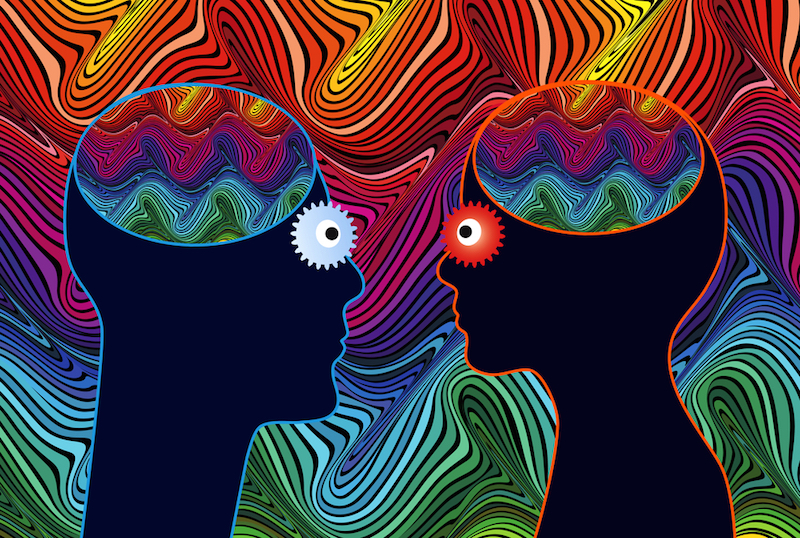Extended Trip: Why LSD's Effects Last So Long

LSD is an extremely potent, long-lasting psychedelic drug: A dose of just 100 micrograms is enough to send someone on a hallucinatory trip that can last a whole day. Now, scientists report that the way the drug molecule binds to brain receptors could explain LSD's long-lasting effects.
LSD, or lysergic acid diethylamide, has a similar chemical structure to the "feel-good" brain chemical serotonin. This allows the drug to act on the brain receptors that recognize serotonin, and this produces some of LSD's well-known effects, like visual distortions and "ego dissolution." This effect involves feeling like the boundary between one's self and the rest of the world has disappeared.
In the study, researchers turned to a technique called X-ray crystallography to better understand the structure of LSD molecules. Thistechnique shines X-rays on a molecule's crystalline structure to create a scattered reflection pattern on film, which allows researchers to visualize the molecule's shape. [Trippy Tales: The History of 8 Hallucinogens]
Their results, which were published today (Jan. 26) in the journal Cell, showed that theLSD molecule nestles into the serotonin receptor's binding pocket. Then, some of the amino acids within the serotonin receptor act like a lid, pushing the LSD molecule deeper inside the receptor's pocket, and trapping it there for a long time, said study co-author John McCorvy, a postdoctoral fellow in pharmacology at the University of North Carolina at Chapel Hill.
The team demonstrated that this interaction depends on the specific structure of LSD and the serotonin receptors; when the researchers mutated the receptor, changing its shape, they found that LSD no longer stayed in the pocket for so long.
"LSD stays on the serotonin receptors for a very long time, especially in relation to other drugs," McCorvy told Live Science. "It stays on for 8 to 12 hours, and it's extremely difficult to get off the receptor."
The researchers said this interaction may help explain the long duration of an LSD psychedelic trip. Dr. Brian Roth, the study's senior author and a professor of pharmacology at UNC, said he used to see people who took LSD having such trips at concerts by the band the Grateful Dead.
Get the world’s most fascinating discoveries delivered straight to your inbox.
"It would be interesting to be in the parking lot hearing people wondering when their LSD experience was going to end," Roth said in a statement. "A lot of people who take the drug are not aware of just how long it lasts."
But beyond explaining the long trips of Deadheads, the new results could also have implications for psychiatric research, he said. [5 Controversial Mental Health Treatments]
LSD might be best known for its recreational uses, immortalized by the likes of the author Hunter S. Thompson. But the discovery of LSD's psychoactive properties in the 1940s was one of the key historical milestones in mental health research, McCorvy said. This finding catalyzed the search for serotonin receptors in the brain, which eventually led to the development of some antidepressant and antipsychotic medications.
"A lot of people were actually not clued in to serotonin as a system being involved with mental health whatsoever," McCorvy said. "No one had actually appreciated the fact that serotonin was in the brain."
Further research on the mechanisms behind LSD's potent and long-lasting actions could lead to more-targeted psychiatric drugs that have fewer side effects than current medications, the researchers said.
Original article on Live Science.

